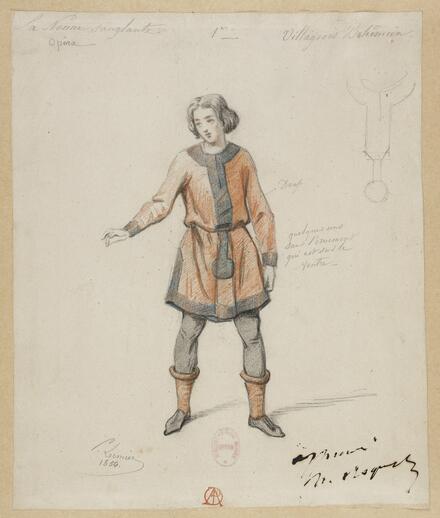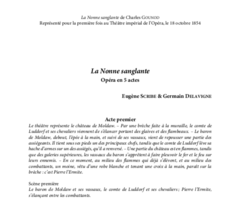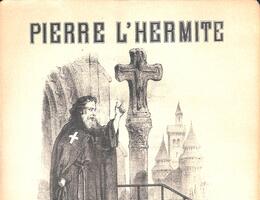La Nonne sanglante

Opéra en 5 actes d'après Lewis. Créé à l'Opéra de Paris.
In England, in the final decades of the 18th century, the fashion for Gothic novels drew on medieval legends. Published in 1796, The Monk by Matthew Gregory Lewis was one of the genre’s biggest successes. The text tells the story of a “bleeding nun”, a traditional figure in German literature, forced to take vows by her family. Instead of turning her back on worldly pleasures, the nun kills one of her lovers, before being murdered in her turn. During the French Restoration, the popularity of the Gothic genre, as characterised by the presence of ghosts and evil spirits, spread for the first time to the French musical stage. At the Paris Opéra, the Parisians discovered the legend of Robert le Diable in 1831, then Maria de Rudenz, a character inspired by the figure of the bleeding nun in The Monk, in 1840. In 1841, Berlioz was working on a four-act opera, based on a libretto by Eugène Scribe and Germain Delavigne, inspired by Lewis’s bestseller. Busy with other projects, the composer never completed it. So it was Charles Gounod whom the librettists eventually asked to set their somewhat toned-down adaptation of the Monk. In their text, the nun is motivated by nobler feelings of love than in Lewis’s novel and she is killed by her beloved. Begun in 1852, the composition of this five-act opera was completed in the summer of the following year. Although it was supposed to receive its first performance in December 1853, the work was finally premiered on 18 October 1854. It enjoyed a certain degree of success and was also very well received by the critics. In La Presse, Théophile Gautier praised Gounod’s “serious-mindedness” which “makes no concession to bad taste”. Despite this positive reception, the work appears to have disappeared from the opera stage for many years, until its recent rediscovery in several European productions.



